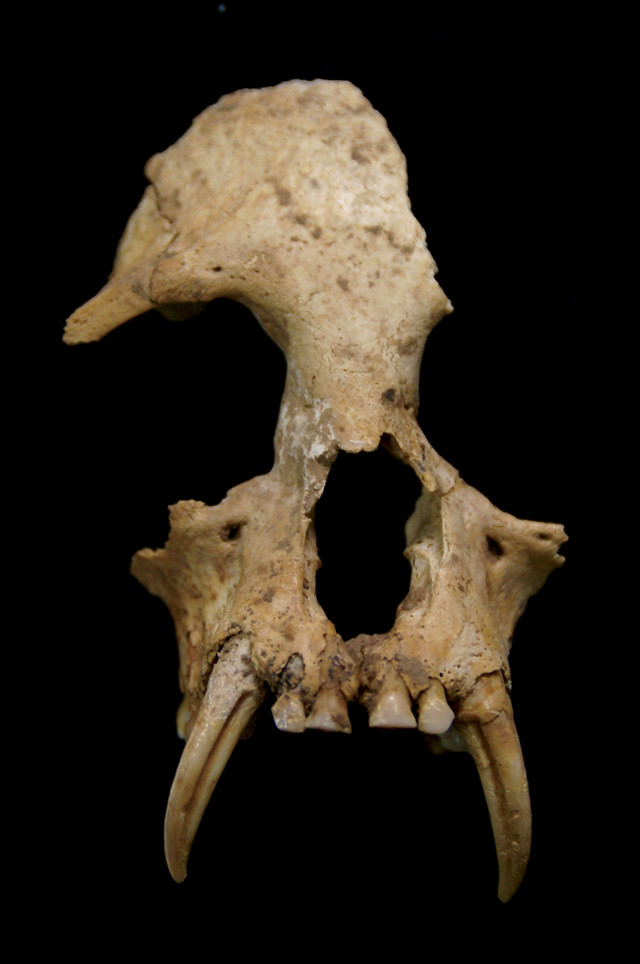
by Mary Caperton Morton Monday, September 10, 2018

Junzi imperialis is a newly described extinct gibbon from China. Credit: Samuel Turvey/ZSL.
About 2,200 years ago, a Chinese noblewoman was buried in a tomb with a menagerie of animals, including 12 horses, a leopard, a lynx and a species of gibbon unknown to modern science. The new ape, identified using detailed cranial and dental measurements as a new genus and species — Junzi imperialis — may represent the first ape to have gone extinct due to human influence after the last ice age.
The tomb, found in the ancient capital city of Chang’an, likely belonged to Lady Xia, the grandmother of China’s first emperor, Qin Shi Huang, according to a new study in Science. Historical accounts describe gibbons living across China until about 200 years ago. Today, four species of gibbon, all highly endangered, still live in tiny pockets of southwestern China.
The Holocene fossil record of gibbons and other primates in China is extremely limited, making the entombed gibbon especially valuable to scientists interested in Asian apes. “Our description of J. imperialis suggests that past human-caused primate diversity loss may be underestimated, with important implications for understanding extinction vulnerability and informing conservation,” wrote Samuel Turvey of the Zoological Society of London and colleagues.
© 2008-2021. All rights reserved. Any copying, redistribution or retransmission of any of the contents of this service without the expressed written permission of the American Geosciences Institute is expressly prohibited. Click here for all copyright requests.